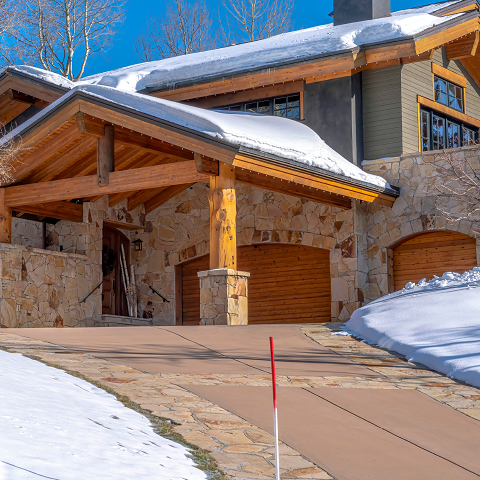nVent RAYCHEM pipe freeze protection systems consume electricity, but do they provide benefits for sustainability versus alternatives? That is what we will explore in this post.
When Pipes Freeze
Cold temperatures can lead to frozen pipes, which are susceptible to bursting. We know that water freezes at 0 degrees Celsius (32 degrees Fahrenheit), but for water inside a pipe to freeze, the temperature needs to be a bit lower. When temperatures drop below -6 degrees Celsius (20 degrees Fahrenheit) for three hours, pipes begin to freeze. They are at danger of bursting after about 6 hours at these temperatures.
Frozen pipes, in the best case, stop the flow of water. Burst pipes can cause severe water damage, costing anywhere from $1000 to $4000 in damage from a single burst pipe in a residential home and wasting our precious water resources.
Preventing Frozen Pipes
Despite the common conditions that lead to frozen pipes and the dire consequences that arise from them, the most common response to preventing frozen pipes is to do nothing! Many building owners and operators are not aware of the problem or the solutions available. Others choose to do nothing based on a feeling that the conditions mentioned above aren’t likely in their area but history has shown that extreme cold weather can happen where we least expect it. Ignoring the possibility of frozen pipes increases the odds of frozen pipes over time.
A common response to concern about frozen pipes is to turn the building temperature up but there are two key drawbacks to this solution. Firstly, raising the temperature in a residential home by 0.5 degrees Celsius (1 degree Fahrenheit) will increase heating costs by 3 percent. Adjusting the temperature significantly enough to prevent frozen pipes would consume vast amounts of extra energy. Secondly, raising the temperature too high can reduce comfort, especially at night, when most people sleep better at lower temperatures.
If the building in question has no pipes inside exterior walls or that are otherwise exposed to the outside, the risk is reduced; however, what if you plan to be away for an extended period in the winter? Perhaps you are going on vacation to warmer climes, or your summer vacation home will not be occupied in winter? In this case, you can ensure pipes inside the building will not freeze by heating the entire building while you are away. Of course, heating the entire building would use significantly more energy than if you were only heating the pipes themselves.
A quick internet search for the best way to prevent frozen pipes yields a simple answer: install pipe insulation. Pipe insulation reduces the chances of frozen pipes because it lengthens the time it takes for pipes to freeze but it does not stop heat loss and it does not replace heat lost over time.
The best and most sustainable way to prevent frozen pipes, burst pipes, and water damage is to install an electric heat tracing system with pipe insulation. nVent RAYCHEM pipe freeze protection systems include sensors, controllers, and heat tracing cables that are designed to deliver heat only when the conditions warrant. The absolute best systems utilize self-regulating heating cables that automatically adjust to the ambient temperature, ensuring they deliver more energy when it’s needed and less when it’s not.
nVent RAYCHEM Pipe Freeze Protection Systems are the most sustainable option because…
- They prevent water waste.
- They avoid unnecessary time, energy, and money spent on repairs.
- They prevent damage and dangers associated with loss of water and burst pipes.
- They use less energy than raising the temperature inside a building or heating an unoccupied building unnecessarily.
- Self-regulating cables use less energy than constant-wattage cables or heat tapes because the heat output is reduced when it is warmer.
- nVent RAYCHEM controllers and sensors combine to ensure the system is activated only when needed.
To learn more about nVent RAYCHEM Pipe Freeze Protection systems, click here.


